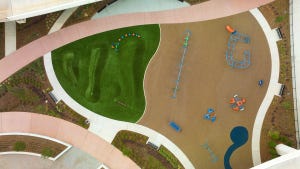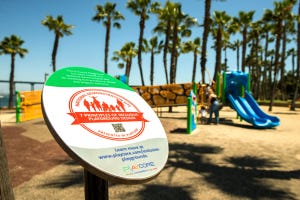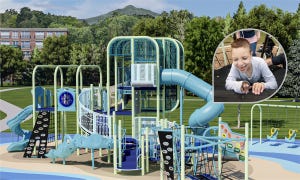Independence Day for Play
This is the fourth post in a seven part series on inclusive playground design (View all posts in this series). Can’t wait for all seven parts? Request a copy of Me2®: 7 Principles of Inclusive Playground Design® and put research into action.
Children love to express their independence. It’s an important milestone in their overall development. An inclusive playground, therefore, should be a place where people of all abilities can access play as independently as possible. That brings us to Principle 4 of the 7 Principles of Inclusive Playground Design® - Be Independent.

Helping children experience independent play begins with giving them a clear direction. Instructional and directional signage is a great way to accomplish this. You can use signs or panels with words, pictures and/or symbols that help children find a preferred activity or help them communicate to friends and family. Accessible routes of travel throughout the play area are also essential to promote independence. Use ADA-compliant surfacing and provide ramped access to elevated play activities to support both physical access and social interaction between users.
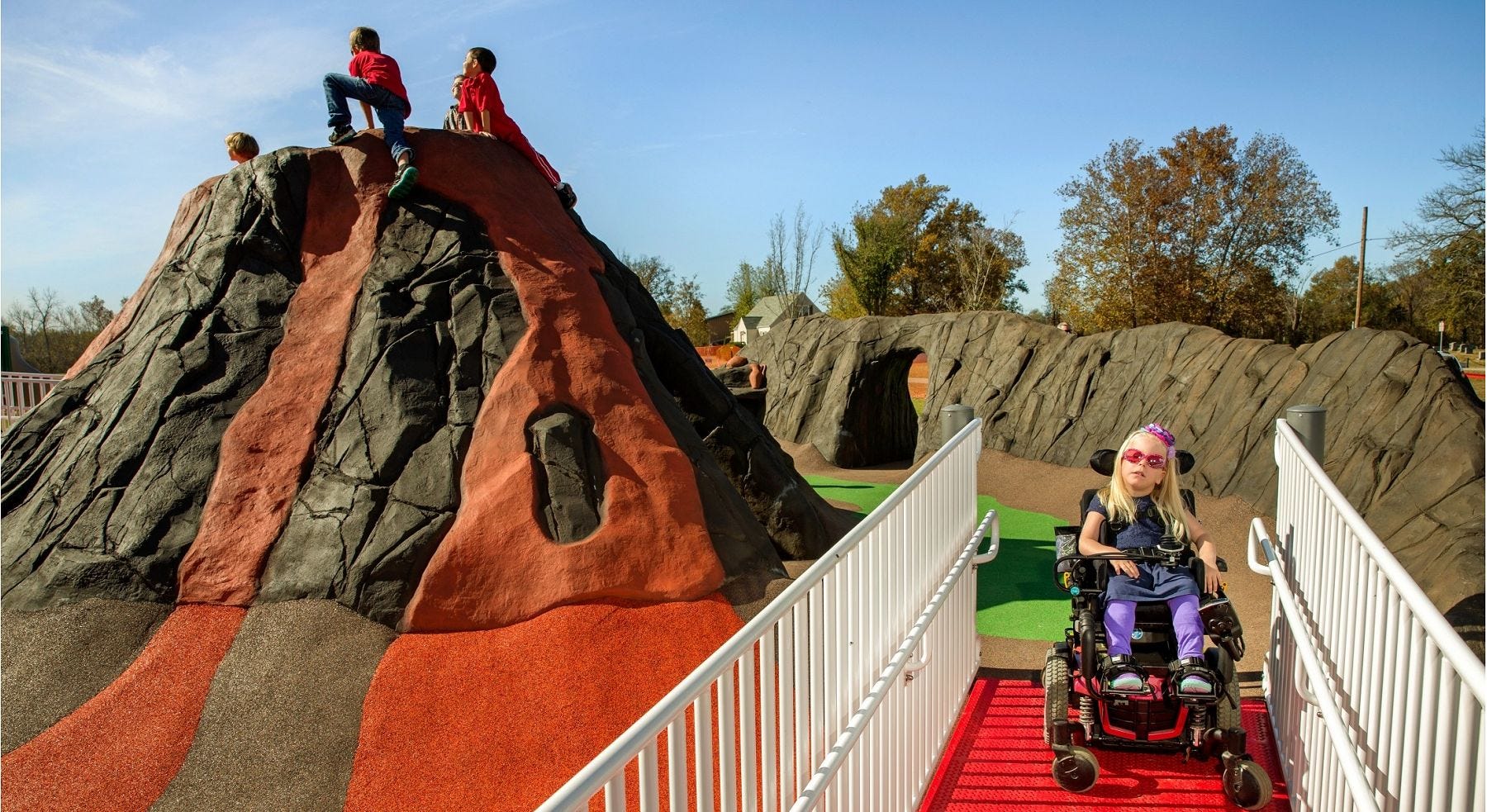
ADA-compliant surfacing, ramps and transfer systems make it possible for everyone to explore the play area.
Providing a sensory-rich environment encourages children to explore and discover the play area on their own. Find ways to include activities that provide auditory, visual and tactile feedback to help children understand the world around them. Sensory panels and musical instruments at ground level or on a play structure encourage social, cooperative play. Include play activities that offer vestibular (balance and movement) and proprioceptive (motor planning) benefits. Swinging, rocking and spinning activities are all excellent options for providing sensory rich input.
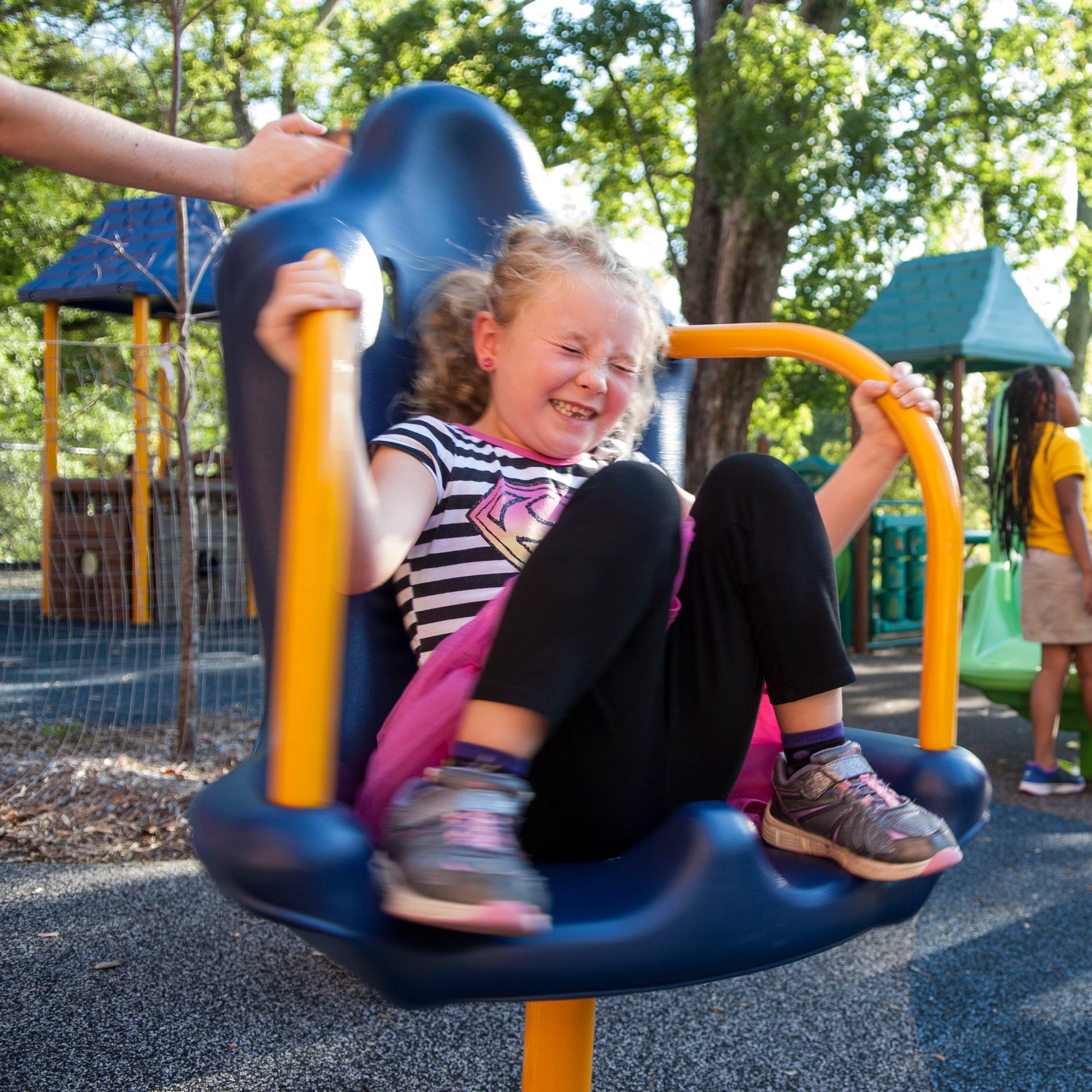
Sensory Spinning Seat encourages cooperative play and engages the vestibular senses
Finally, consider designing with products that promote independent play such as slide transfers or adapted climbers. Play panels that incorporate adaptive switch technology are ideal for people with limited gross and fine motor skills. These types of products allow people of all abilities to enjoy, manipulate, and interact with fun play activities designed to facilitate active participation.
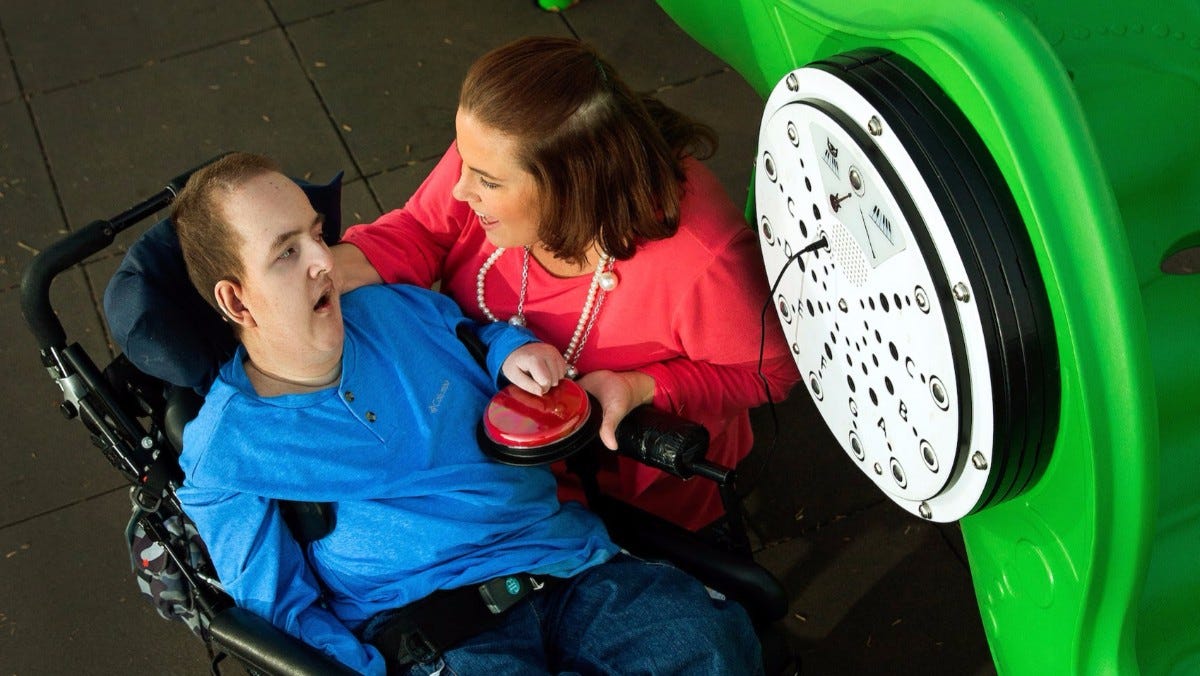
Panels and activities that provide adaptive switch input assist in the play experience for people with limited mobility
Here’s the point: If you design a space that communicates what to expect, what to do, and how to participate in play, you will support a child’s self-determination and independence. A play environment like this builds confidence and fosters positive self-esteem. This is a place where everyone can be independent.
To learn more about the Seven Principles of Inclusive Playground Design, request a copy of the complete Me2 guidebook or contact a GameTime representative in your neighborhood to explore inclusive play options for your community.
- Trails (27)
- Schools (180)
- Press Releases (102)
- Playground Funding (3)
- Play Science & Research (62)
- Parks & Recreation (339)
- Outdoor Fitness (137)
- National Demonstration Site (32)
- Landscape Architects (72)
- Inclusive Play (101)
- Daycare and Early Learning (62)
- Custom Play (36)
- College Campus (27)
- Churches (50)
- Challenge Course (30)
- Featured Projects (72)
- Site and Shade (6)


